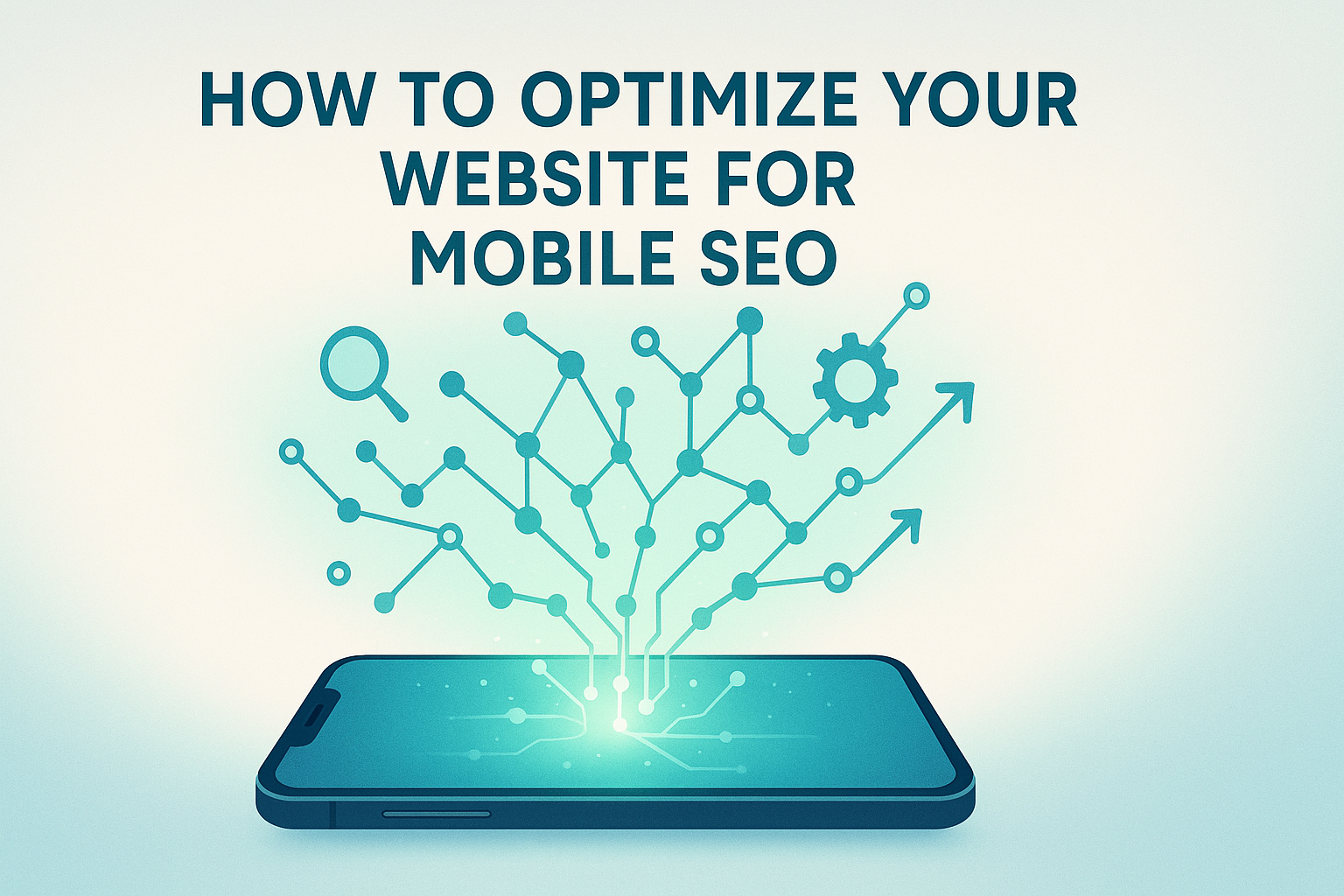
How to Optimize Your Website for Mobile SEO
How to Optimize Your Website for Mobile SEO
In today’s fast-paced digital world, mobile devices have become the primary mode of accessing the internet. With more users browsing on their phones and tablets than ever before, ensuring your website is mobile-friendly is crucial for both user experience and SEO. Not sure where to start? Don’t worry, we’ve got you covered! Let's explore how you can optimize your website for mobile SEO to boost your visibility and user satisfaction. 📱
Understanding Mobile SEO
Before diving into the specifics, it’s essential to understand what mobile SEO entails. Mobile SEO involves optimizing your website to ensure it provides a great experience on mobile devices, and it’s all about improving your site’s visibility and usability for mobile users. This process includes everything from responsive design and fast loading times to ensuring your content is accessible and engaging. With Google’s mobile-first indexing, mobile optimization isn’t just an option; it’s a necessity.
Responsive Web Design
Responsive design is the cornerstone of mobile SEO. A responsive website automatically adjusts its layout to fit the screen size it’s viewed on, providing an optimal user experience across all devices. This adaptability ensures that your content is easily readable and navigable on smartphones, tablets, and desktops alike.
To implement responsive design:
- Use flexible grid layouts that adjust to the screen size.
- Implement fluid images and media queries to ensure images scale correctly.
- Test your site on various devices to ensure it looks and functions correctly.
Boosting Page Speed
Page speed is a critical factor in mobile SEO, as slow-loading pages can frustrate users and increase bounce rates. Google incorporates page speed into its ranking algorithm, so a fast site can also improve your search engine rankings.
Here’s how you can enhance your page speed:
- Optimize images by compressing them without losing quality.
- Minimize redirects and reduce server response time.
- Use browser caching and enable compression to speed up load times.
Streamlining Mobile Navigation
Navigating a website on a mobile device should be intuitive and straightforward. Users should be able to find what they’re looking for quickly and without frustration. Here’s how to make your mobile navigation user-friendly:
- Use a simple menu structure and avoid nested menus.
- Implement a sticky navigation bar that remains visible as users scroll.
- Prioritize essential links and remove unnecessary elements.
Readable and Engaging Content
Content remains king, even on mobile. However, reading on a mobile device is different from a desktop. To keep your mobile users engaged:
- Use short paragraphs and bullet points to break up text.
- Increase font size and line spacing for readability.
- Utilize headings and subheadings for easier navigation.
Implementing AMP (Accelerated Mobile Pages)
Accelerated Mobile Pages (AMP) is an open-source initiative that allows you to create fast-loading mobile pages. AMP can significantly improve mobile performance by stripping down HTML and using a streamlined version of CSS.
Benefits of implementing AMP include:
- Improved page speed and user experience.
- Potentially higher search rankings due to faster load times.
- Enhanced visibility in Google search results, as AMP pages often appear in the Top Stories carousel.
Ensuring Mobile-Friendly Pop-Ups
While pop-ups can be useful for capturing leads or promoting offers, they can be detrimental to mobile user experience if not implemented correctly. Ensure your pop-ups are mobile-friendly by:
- Using exit-intent pop-ups that appear when a user is about to leave.
- Keeping pop-ups small and easy to close.
- Avoiding pop-ups on the first page a user visits.
Testing and Monitoring Your Mobile Site
Regularly testing and monitoring your mobile site is crucial to identify and fix any issues that may arise. Use tools like Google’s Mobile-Friendly Test and PageSpeed Insights to assess your site’s performance and usability. Pay attention to user feedback and analytics to continuously improve the mobile experience.
Conclusion
Optimizing your website for mobile SEO is no longer just a best practice—it’s a requirement. By implementing responsive design, improving page speed, and ensuring a seamless mobile experience, you can enhance your site's visibility and keep your users happy. As mobile technology continues to evolve, staying updated with the latest trends and tools will be key to maintaining a competitive edge. Get started today, and watch your website soar in the mobile-first world! 🚀
